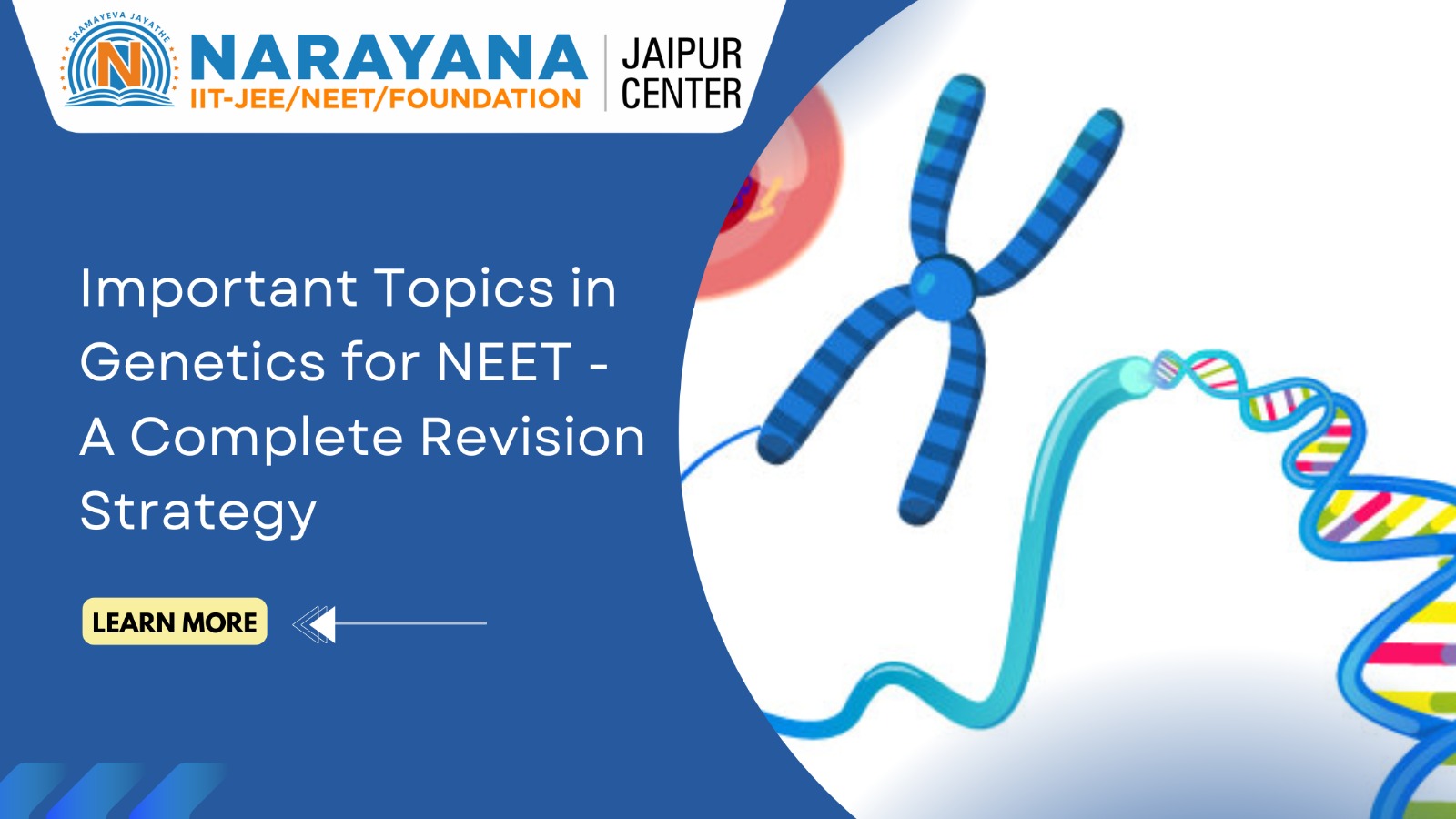Genetics is often considered one of the most challenging units in Biology for NEET aspirants. However, with a structured strategy, this unit can become one of the most scoring sections. The key lies in effective organization and systematic revision.
In NCERT, the Genetics unit is divided into two main chapters:
- Principles of Inheritance and Variation
- Molecular Basis of Inheritance
Since both chapters follow a similar approach for preparation, this article focuses on a strategic final revision plan for Principles of Inheritance and Variation.
Segmentation of the Chapter for Efficient Learning
This chapter can be divided into the following key segments for structured revision:
- Scientists and their contributions
- Experiments
- Ratios of different crosses
- Important cases of inheritance
- Sex determination
- Human genetic disorders
- Pedigree analysis
- Hardy Weinberg Principle (This topic is actually in evolution chapter, but most teachers cover it with Genetics).

1. Scientists and Their Contributions
Understanding the contributions of various scientists is crucial, as questions are frequently asked in NEET. Make a list of all the scientists mentioned in this chapter and note their key contributions. This will ensure coverage of at least one direct question in NEET or board exams.
2. Key Experiments in Genetics
Certain classic experiments form the backbone of genetics. We must ensure we revise:
- Mendel’s Pea Plant Experiment (Monohybrid and Dihybrid Cross)
3. Ratios of Different Crosses
Genetics problems often test knowledge of the different crosses and their phenotypic/genotypic ratios. We can make a quick revision table:
- Monohybrid Cross: 3:1 (Phenotypic), 1:2:1 (Genotypic)
- Dihybrid Cross: 9:3:3:1 (Phenotypic)
- Test Cross: 1:1 (Phenotypic)
- Back Cross: Same as the parent genotype
4. Important Cases of Inheritance
This section includes conditions like:
- Incomplete Dominance (e.g., Snapdragon Flower Color)
- Codominance (e.g., Blood Groups)
- Pleiotropy (e.g., Phenylketonuria)
- Multiple Alleles (e.g., ABO Blood Group System)
- Polygenic Inheritance (e.g., Skin Color)
5. Sex Determination Mechanisms
Creating a flowchart to simplify the different sex determination mechanisms is highly beneficial, such as:
- XX-XY System (Humans, Drosophila)
- ZZ-ZW System (Birds, Reptiles)
- XO System (Grasshoppers)
- Haplodiploidy (Honeybee)
We must also note the crucial points about sex determination in honeybees.
6. Human Genetic Disorders
Memorizing the major human genetic disorders with their type (autosomal/recessive/X-linked) and symptoms is essential:
- Autosomal Recessive: Phenylketonuria, Sickle Cell Anemia
- Autosomal Dominant: Huntington’s Disease
- X-linked Recessive: Colorblindness, Hemophilia
- Chromosomal Disorders: Down’s Syndrome (Trisomy 21), Turner’s Syndrome (XO), Klinefelter’s Syndrome (XXY)
7. Pedigree Analysis
- First, understanding the rules of pedigree analysis is key to determining the mode of inheritance.
- Identifying whether a given trait is dominant/recessive, autosomal/X-linked is essential.
- Practicing previous year pedigree questions will help us get familiar with the patterns.
8. Hardy-Weinberg Principle
Though technically covered in the Evolution chapter, the Hardy-Weinberg Principle is frequently taught alongside genetics.
- We must learn the equation: p² + 2pq + q² = 1 and p + q = 1
- Understanding allele and genotype frequencies is crucial.
- Solving previous year questions is recommended, as they typically follow a fixed pattern with changed numerical values.
Final Revision Strategy
- Revise All Scientists’ Contributions: Prepare a one-page summary.
- List & Memorize Important Crosses: Keep a small cheat sheet for quick recall.
- Understand Key Concepts of Inheritance: Create diagrams and charts.
- Draw a Flowchart for Sex Determination: Helps in quick revision.
- Memorize All Human Genetic Disorders: Use mnemonics for easy recall.
- Master Pedigree Analysis: Solve PYQs (Past Year Questions).
- Practice Hardy-Weinberg Questions: Focus on NEET’s frequently asked patterns.
- Solve Last 10 Years’ NEET Questions: Aim to revise each 3-4 times before the exam.
Conclusion
Success in genetics requires a strategic, focused, and consistent approach. By following this structured revision plan and practicing NEET-level questions, we can transform this challenging unit into a high-scoring one. Remember, nothing is impossible if we are determined.
Name: Mukesh Verma
Department: Botany NEET
Narayana Jaipur Center (NIHQ)


